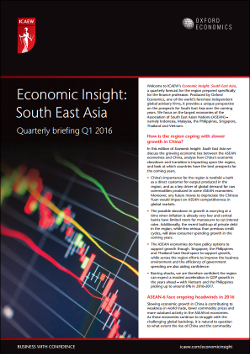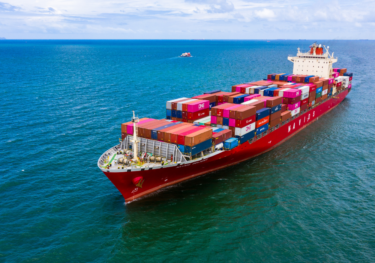Ungated Post | 15 Mar 2016
ICAEW Economic Insight: South East Asia, Q1 2016

ASEAN economies have been at the heart of global trade integration over recent decades, as well as being a key part of China’s emergence into the global economy. But with world trade set for slower expansion, and China’s economic growth becoming more domestically-led, how will these economies perform in the coming years? Oxford Economics analyses these issues in ICAEW Economic Insight: South East Asia 2016 Q1.
Oxford Economics are the economics partner to Institute of Chartered Accountants in England and Wales (ICAEW). Read more here and view other reports, including Economic Insight: Africa; Economic Insight: Middle East; and Economic Insight: Greater China. See Tom Rogers, Associate Director of Macroeconomic Consulting and Economic Advisor to ICAEW discuss the South East Asia’s report’s findings in this short video here.
Oxford Economics’ team is expert at applying advanced economic tools that provide valuable insights into today’s most pressing business, financial, and policy issues.
To find out more about our capabilities, contact:
Americas
Diantha Redd
+1 (646) 503 3052
Email
Asia Pacific
Peter Suomi
+65 6850 0110
Email
EMEA
Aoife Pearson
+44 (0)203 910 8054
Email
Related Services

Post
The economic impact of abandoning the WTO
Oxford Economics have been commissioned by the International Chamber of Commerce (ICC) to provide an independent assessment of the economic impact of WTO dissolution. This report details our findings and the assumptions underpinning our analysis.
Find Out More
Post
The economic impact of the sports activities of public service media
This study shows how the sports activities of public service media supported €4.5 billion of GDP and 57,000 jobs across 31 European countries in 2022, taking direct, indirect (supply chain), and induced (wage-funded expenditure) impacts into account. The report also highlights wider economic benefits of public service media sports coverage, such as the way in which it leverages sponsorship income for sports bodies.
Find Out More
Post
Global Trade Education: The role of private philanthropy
Global trade can amplify economic development and poverty alleviation. Capable leaders are required to put in place enabling conditions for trade, but currently these skills are underprovided in developing countries. For philanthropists, investing in trade leadership talent through graduate-level scholarships is an opportunity to make meaningful contributions that can multiply and sustain global economic development.
Find Out More